Over 2 billion investment in space: the National Plan for Recovery and Resilience (PNRR) and the National Complementary Fund allocated this sum to support high-technology sectors, synergic with strategic European initiatives, which can help develop our country’s unique space skills. This includes Earth Observation services, instruments for monitoring the Earth and outer space, advanced production infrastructures and other initiatives to strengthen national expertise in the Space Economy. Within this framework, Leonardo and its joint ventures Telespazio and Thales Alenia Space play and will continue to play a key role.
We can see this in the contracts signed for PNRR projects covering several priority areas of intervention.
Earth Observation
The spearhead of the PNRR is IRIDE, one of Europe’s most important Earth Observation satellite space programmes.
In conjunction with other national and European space systems, the IRIDE constellation aims to serve public administrations, such as the Italian Civil Protection and many others, helping to combat hydrogeological instability and fires, protect coastlines, and monitor critical infrastructure, air quality and weather conditions. It will also provide analytical data for start-ups, small and medium-sized enterprises and industries in the sector to develop commercial applications. In particular, it will offer eight macro-services related to marine and coastal monitoring, air quality, land movement monitoring, land cover, hydrometeorological and climate, water resources monitoring, emergency management and security.
Created in Italy on a government initiative, IRIDE will be completed by 2026 under the management of the European Space Agency (ESA) with the support of the Italian Space Agency (ASI). IRIDE is a hybrid constellation comprising different classes of satellites with sensors to monitor our planet; an end-to-end system consisting of a set of sub-constellations of low-earth orbit satellites, the ground operational infrastructure (downstream) and services for the Italian public administration.
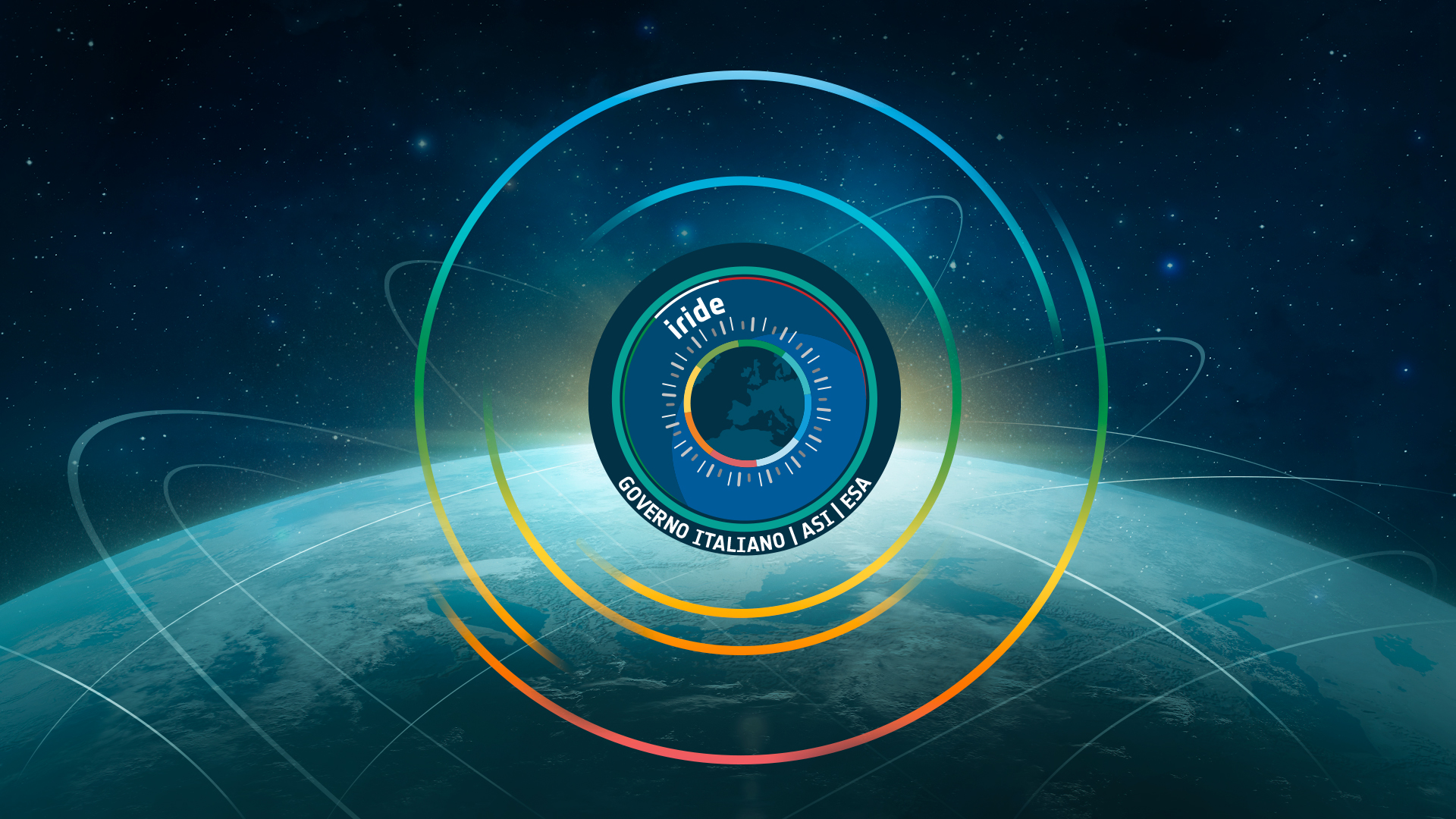
Therefore, IRIDE can be considered ‘a constellation of constellations’. It comprises 34 satellites with a further option of another 35 satellites entirely made by Italian companies.
For Italy as a country and space industry, IRIDE represents a unique opportunity to consolidate its leading role in the European space sector, given the presence of important national companies such as Leonardo, Telespazio, Thales Alenia Space and e-GEOS. In addition, IRIDE can help stimulate innovation and the development of new technological solutions, creating new opportunities for SMEs active in the space sector.
For IRIDE, Thales Alenia Space (a joint venture between Thales 67% and Leonardo 33%), signed a contract with ESA to supply an initial group of six small satellites based on SAR (Synthetic Aperture Radar) technology, with an option for four more, and a contract to deliver one satellite, and an option for another, based on optical technology. All of Thales Alenia Space’s satellites will use the innovative, modular NIMBUS (New Italian Micro Bus) platform and feature solar panels (PVA) made by Leonardo.
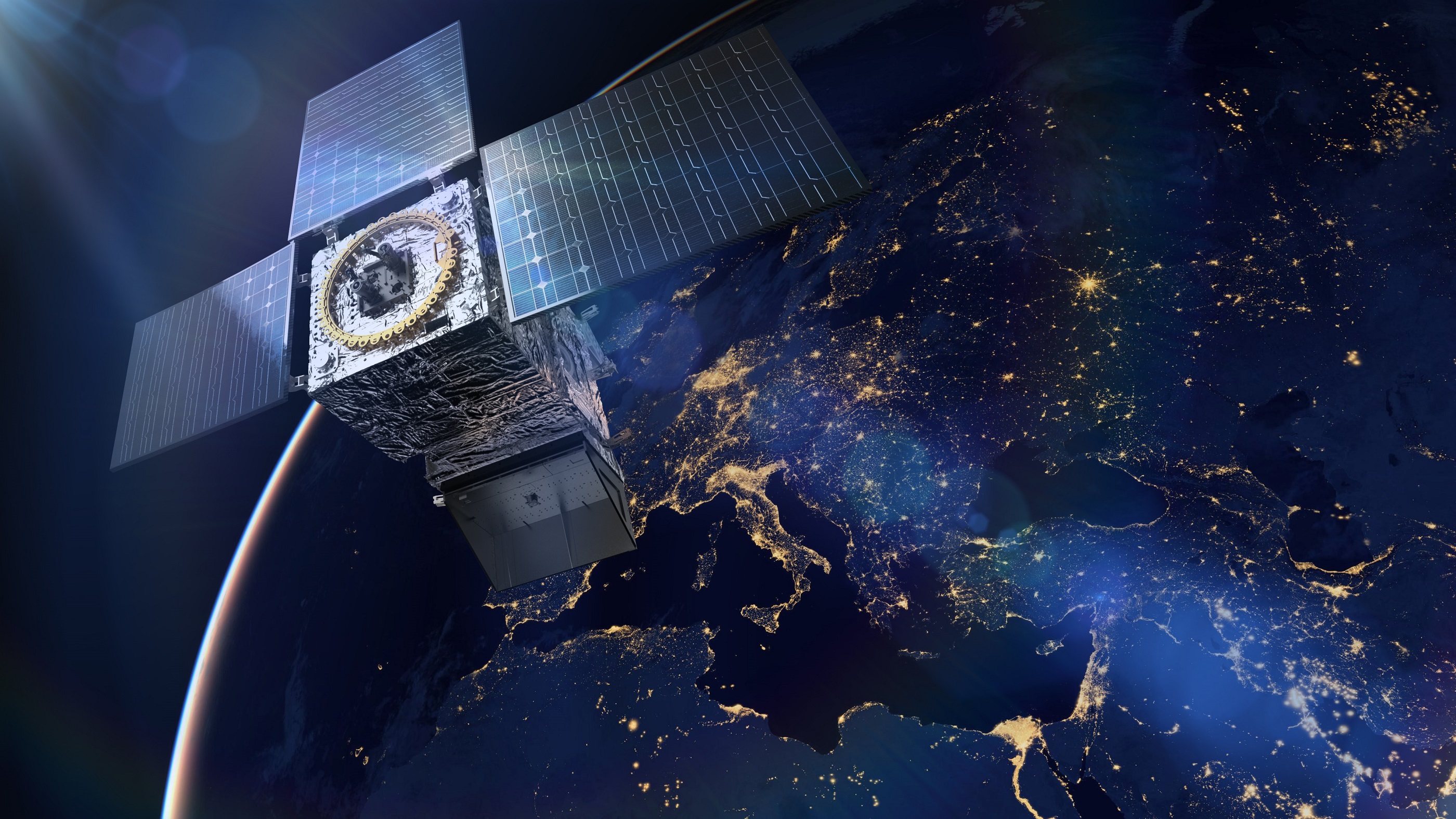
Artistic impression IRIDE ©SITAEL
Four hyperspectral instruments made by Leonardo will be onboard the four satellites provided by Sitael The company will provide compact and lightweight state-of-the-art sensors, building on the skills and experience gained over the years in programmes such as PRISMA (with the hyperspectral imaging system on board, built by Leonardo), which make Italy a world leader in this type of technology. The four satellites are based on the PLATiNO platform, a programme developed by Sitael, Leonardo, Thales Alenia Space and Airbus Italia through a technological development contract with ASI.
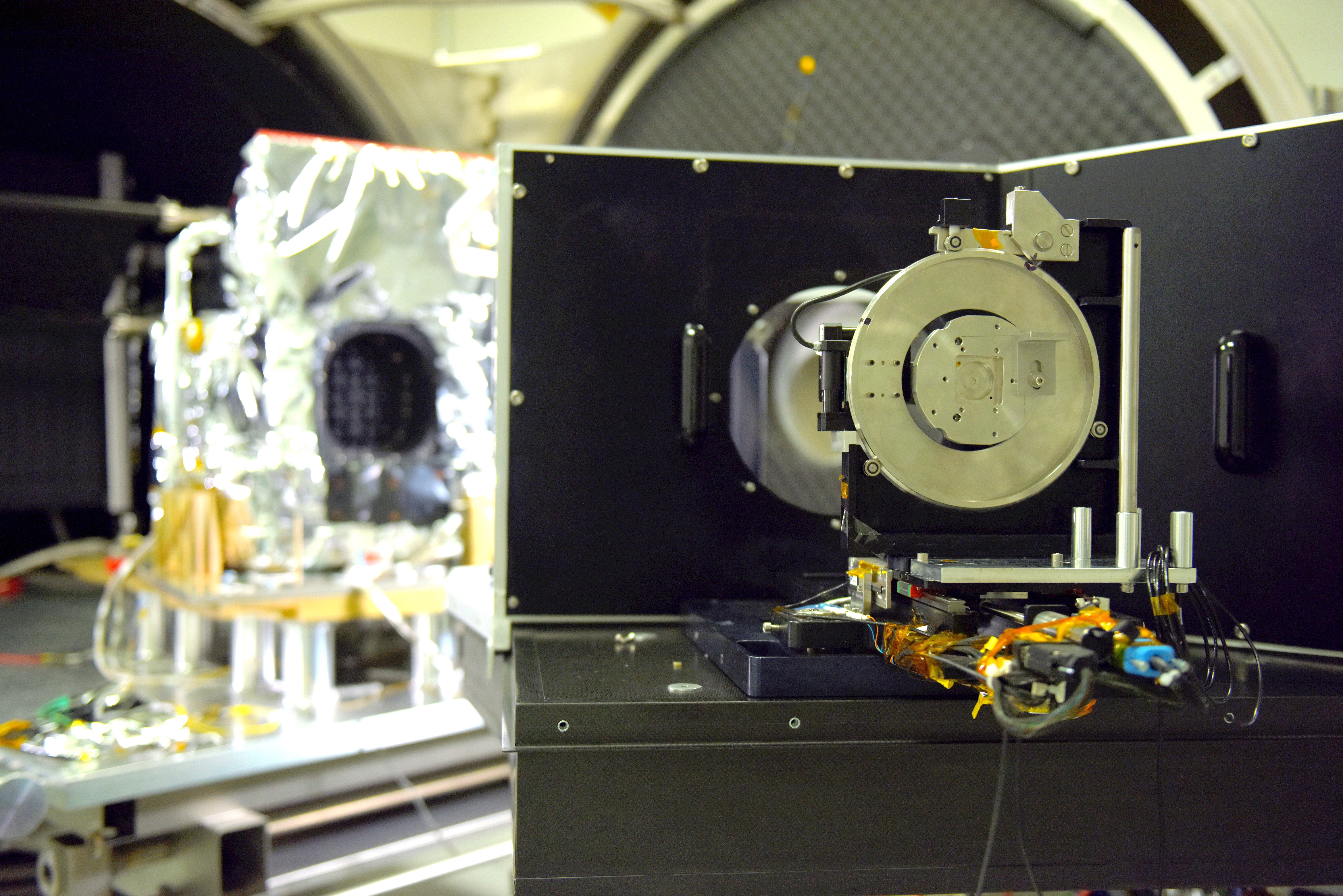
The Hyperspectral instrument on board PRISMA satellite produced by Leonardo Campi Bisenzio (Florence) site
For the ground operational infrastructure, Telespazio (joint venture between Leonardo 67% and Thales 33%), as prime contractor of a team including Aiko, Leonardo, Next, Planetek, Serco and Thales Alenia Space, has the contract to construct the constellation’s Flight Operations Segment (FOS), for satellites based on the NIMBUS and PLATiNO platforms. The FOS will provide command and control, orbital detection and collision avoidance, payload data acquisition, monitoring and planning functions for the IRIDE satellites. Not forgetting the crucial cyber security aspects: Leonardo’s Global Security Operation Centre (SOC) will support the FOS with real-time security monitoring to quickly identify potentially damaging assets or events, anticipating potential or actual cyber-attacks.
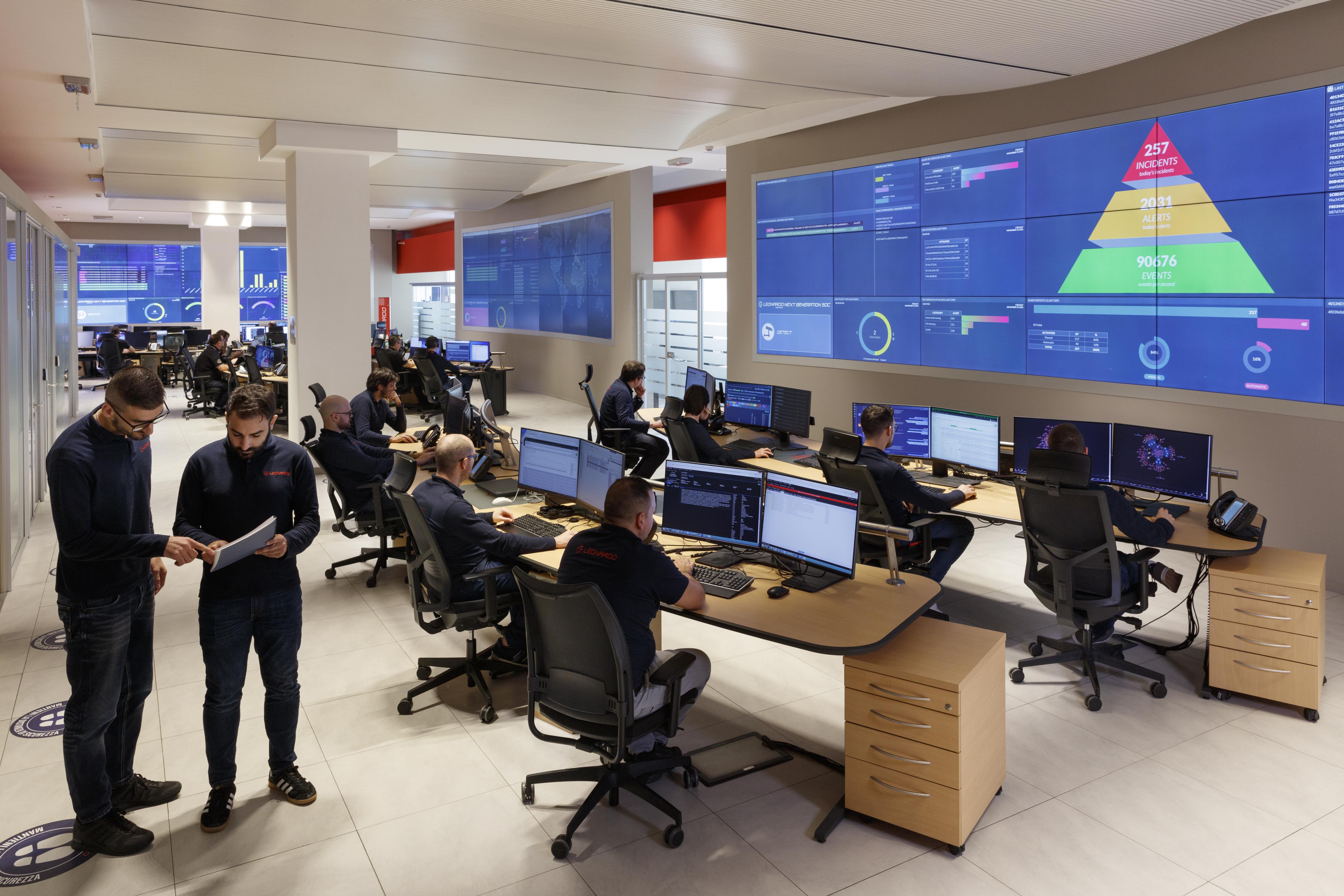
The Leonardo Global Security Operation Centre in Chieti, Italy
Telespazio is also part of the team responsible for the multispectral instrument of the infrastructure under OHB Italia’s responsibility.
e-GEOS will implement IRIDE’s data and service access infrastructure for ESA, leading an industrial team including Leonardo, Telespazio, Planetek, SERCO, Exprivia and Atos. IRIDE’s digital marketplace will provide a reliable and cyber-secure single access point for institutional bodies and commercial customers, transforming Earth observation into a global and collectively useful domain and fostering the adoption of geoinformation services in daily life.
Leonardo supports e-GEOS in defining the cybersecurity strategy for the IRIDE marketplace. It does so, for example, by helping to prepare and maintain the Security Management Plan (SMP), which includes all security principles, organisation, controls, procedures and best practices to ensure that the project and its systems are adequately protected, in line with identified security requirements. Leonardo also carries out a Security Risk Assessment (SRA) of the marketplace to identify the security posture of the systems and establish the appropriate protection to apply to the activities and selected documentation, and to define the secure-by-design guidelines for the start-up of the platform development services.
Security activities also include system monitoring for the early detection of technical faults or security incidents that may make the system temporarily unavailable. To this end, Leonardo manages this monitoring activity from its Global SOC in Chieti.
Leonardo also provides cyber security management in two other contracts where e-GEOS leads the grouping of companies that will provide IRIDE services to study ground movement and emergencies for land and sea safety.
e-GEOS is also one of the teams that will deliver services for studying climate variables, the classification of herbaceous crops, water management, agriculture, forestry and land management, and help implement pilot projects for modelling services based on the concept of the Earth’s digital twin.
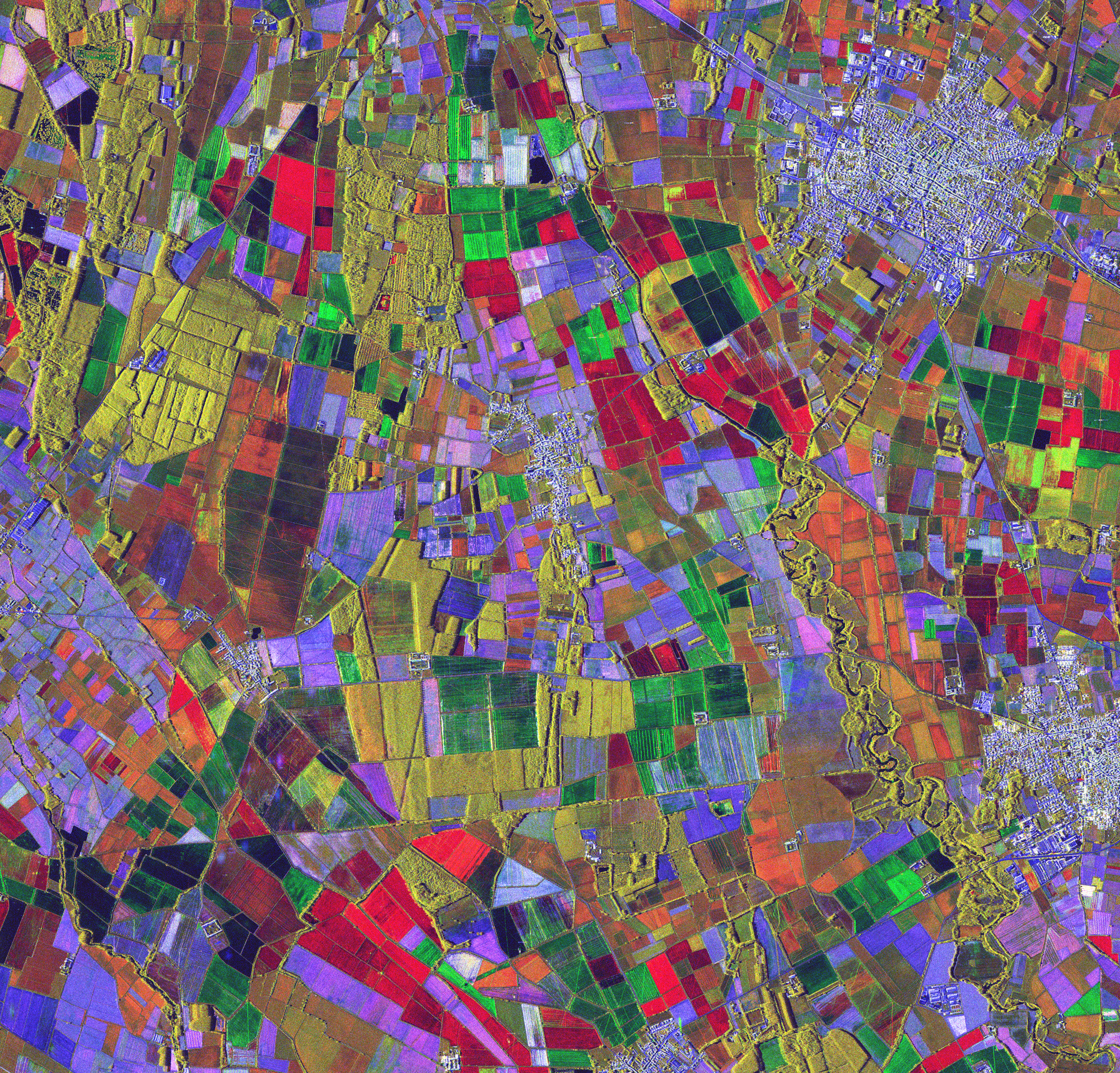
Cultivation field in the Pavia area, Italy, COSMO-SkyMed © ASI, distributed and processed by e-GEOS
Instruments and services in outer space
As the number of satellites in orbit and space missions increases, so does the need for in-orbit services, a strategic opportunity in the sustainable and lasting use of space and a growth driver for the space ecosystem and economy. In-Orbit Servicing refers to all in-orbit activities that include docking, refuelling, repairing, upgrading, maintaining space assets and removing debris.
In this area, Italy will have its own demonstration mission, the design and development of which ASI has assigned to a Temporary Grouping of Companies (RTI) led by Thales Alenia Space Italia and including Leonardo, Telespazio, Avio and D-Orbit. This mission will comprise two satellites (a servicer performing services for a target satellite) with their associated ground control and management services. These will have to perform a series of in-orbit operations entirely autonomously, according to an incremental capability profile involving repeated demonstration activities associated with wide-ranging in-orbit services, such as inspection, proximity operations, docking, refuelling, servicer control of the target, and assembly demonstration activities.
Specifically, Leonardo, leading an industrial team comprising SAB Aerospace and several research centres such as the National Institute for Nuclear Physics (Istituto Nazionale di Fisica Nucleare - INFN) and the Italian Institute of Technology (Istituto Italiano di Tecnologia - IIT), will provide a robotic arm that can perform many movements thanks to its seven degrees of freedom and sophisticated control electronics, docking system and mechanical interface for refuelling. This tool will allow the demonstration mission to carry out and test a series of essential actions: performing a gentle capture of the target, moving and attaching it to the satellite, and correctly inserting the refuelling interface.

The NASA Mission “Mars Sample Return” robotics arm prototype produced by Leonardo, as lead partner of a European industrial consortium
The broader goal of the experimental mission is to develop the key technologies for future-generation in-orbit services, enhancing Italy’s capabilities in a fast-growing sector in Europe and internationally, and leveraging some specific excellences of the national sector: from space robotics, artificial intelligence and sensor technology, proximity operations, guidance-navigation and control, to propulsion, for small and medium-sized satellite classes, traditionally an area of excellence in the national space sector.
Space Factory
One part of the PNRR space funds goes to the efficiency and digitisation of the Italian space industry’s production capacities, with a matching contribution co-financed by private participants. In this context, Thales Alenia Space won a contract with ASI to develop the Space Factory 4.0 programme. The French-Italian joint venture leads a Temporary Grouping of Companies comprising Argotec, CIRA and Sitael to build an interconnected system with facilities across Italy, which will be operational by 2026. The Space Factory will offer the specific means and instruments to produce a wide range of advanced satellites, from large satellite infrastructures weighing hundreds of kilos to satellites weighing only a few tens of kilograms, made in the large quantities envisaged by the new constellation configurations. Space Factory 40 - including a fully digital facility dedicated to designing, manufacturing and testing satellites - will be interconnected with the supply chain, creating an advanced manufacturing hub for national, European and international space programmes.

